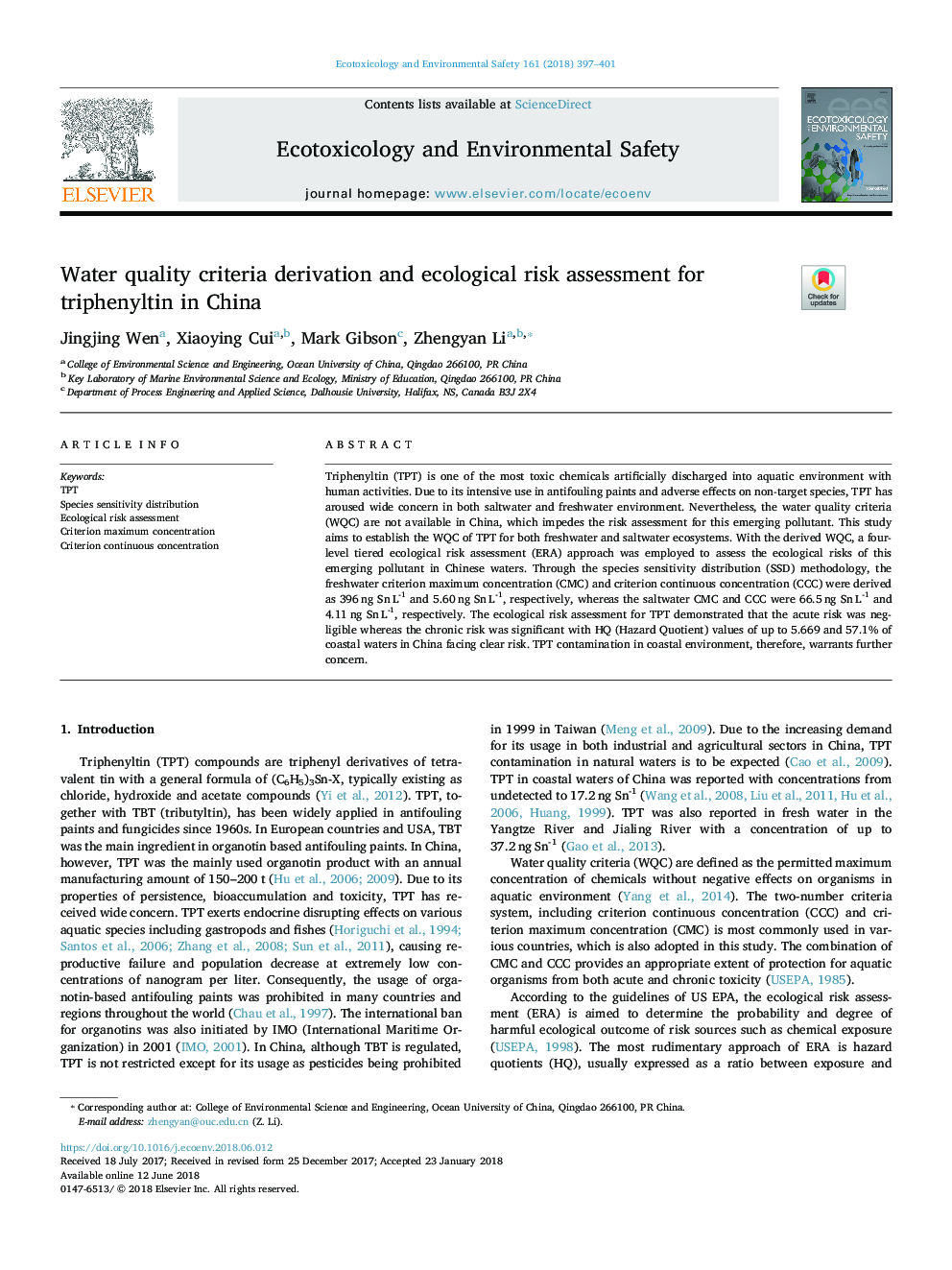| Article ID | Journal | Published Year | Pages | File Type |
|---|---|---|---|---|
| 8853431 | Ecotoxicology and Environmental Safety | 2018 | 5 Pages |
Abstract
Triphenyltin (TPT) is one of the most toxic chemicals artificially discharged into aquatic environment with human activities. Due to its intensive use in antifouling paints and adverse effects on non-target species, TPT has aroused wide concern in both saltwater and freshwater environment. Nevertheless, the water quality criteria (WQC) are not available in China, which impedes the risk assessment for this emerging pollutant. This study aims to establish the WQC of TPT for both freshwater and saltwater ecosystems. With the derived WQC, a four-level tiered ecological risk assessment (ERA) approach was employed to assess the ecological risks of this emerging pollutant in Chinese waters. Through the species sensitivity distribution (SSD) methodology, the freshwater criterion maximum concentration (CMC) and criterion continuous concentration (CCC) were derived as 396â¯ng Snâ¯L-1 and 5.60â¯ng Snâ¯L-1, respectively, whereas the saltwater CMC and CCC were 66.5â¯ng Snâ¯L-1 and 4.11â¯ng Snâ¯L-1, respectively. The ecological risk assessment for TPT demonstrated that the acute risk was negligible whereas the chronic risk was significant with HQ (Hazard Quotient) values of up to 5.669 and 57.1% of coastal waters in China facing clear risk. TPT contamination in coastal environment, therefore, warrants further concern.
Related Topics
Life Sciences
Environmental Science
Environmental Chemistry
Authors
Jingjing Wen, Xiaoying Cui, Mark Gibson, Zhengyan Li,
